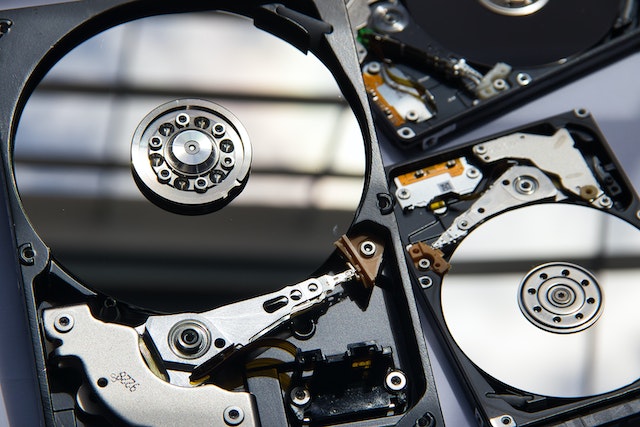It would be impossible to overestimate the significance of data storage and management in the modern world. Data storage, security, and accessibility have all taken on more significance as the volume of available data continues to rise at an exponential rate. Computers rely heavily on hard drives as a storage medium, thus the integrity of the information stored on them is paramount. Manufacturers of hard drives have made advancements in failure prediction technology in recent years. This essay will go into the science behind hard drives and how they might foretell failure.
How Do Hard Drives Work?
While reading and writing data, a hard drive employs rotating disks. These disks, often called platters, have a magnetic coating and are used to store information. The read/write head is responsible for accessing and altering data on the hard drive’s storage platters. You should think about the drive’s dependability in addition to its capacity and performance when shopping for a hard disk.
Hard Drive Predictive Analytics
Using statistical algorithms and machine learning approaches, predictive analytics is a subfield of data analytics. Predictive analytics is used to the world of hard drives in order to foretell whether and when a drive will fail. This system pulls information directly from the hard drive to track a wide range of metrics and spot warning signs.
Using SMART Technology
There is a system built into hard drives called SMART (Self-Monitoring, Analysis, and Reporting Technology) that keeps track of the drive’s status and alerts the user of impending failure. By monitoring a number of parameters—including spin-up time, read error rate, and seek error rate—SMART may detect and diagnose problems before they become catastrophic. The drive has certain characteristics, which can be read with the right program.
The SMART Method in Action
SMART is able to function because it constantly records data about the hard drive’s state in the drive’s memory. The data is then analyzed by statistical algorithms in order to spot red flags that might signal problems with the drive. The drive may be having issues reading data from the platters, for instance, if the read error rate is steadily growing. And if the spin-up time has been steadily growing, it might mean that the drive is having trouble spinning up the platters and is about to fail.
In order to forecast when a drive may fail, predictive analytics algorithms can be used to the
data acquired by SMART. Algorithms like this use machine learning methods to recognize trends and forecast when a drive may fail. The predictive analytics system may conclude that the drive will fail within a certain time frame if, for instance, the read error rate and the seek error rate are both steadily climbing.
Are There Advantages to Using Predictive Analytics on Hard Drives?
There are a number of advantages to using predictive analytics in hard drives. The first benefit is that users can keep tabs on their hard disks’ status and intervene before any data is lost. Users may take precautionary precautions, such backing up their data or swapping out the drive, if they are made aware of possible difficulties before they become serious. Second, it may aid in lessening the financial burden of data loss. Predictive analytics may be used to lessen the likelihood of costly data loss. Ultimately, it may increase hard drives’ general stability. Predictive analytics may be used to increase the hard disk reliability by finding problems before they become severe.
Hard Drive Predictive Analytics’ Capabilities and Limitations
There are advantages to using predictive analytics in hard drives, but the technology also has significant drawbacks. The first issue is that it is not always reliable. While algorithms based on predictive analytics may estimate how likely a drive failure is based on observed patterns, they are not infallible. Even though the algorithm predicts that the drive will be OK, it is still possible that it may fail unexpectedly.
Second, SMART isn’t supported by every hard disk. It might be difficult to track the status of older or less expensive hard drives since they may not support SMART. Last but not least, you’ll need some specialized hardware and training to make use of predictive analytics effectively. There are a variety of hard drive monitoring programs out there, but not everyone is going to be comfortable with using them or understanding the data they provide.
Conclusion
Data storage through hard drives is essential, and the dependability of these drives is of the utmost importance in guaranteeing data security and accessibility. For the purpose of monitoring hard disk status and foreseeing failures, predictive analytics tools like SMART have been created. Predictive analytics algorithms may look for trends that may suggest an impending drive failure by examining a wide range of metrics.
Apart from its flaws, this technology has several advantages, such as higher dependability and lower data loss costs. In light of the ever-increasing prevalence of hard drives, it’s crucial to be conversant with the tools at hand for monitoring their performance and anticipating when they could crash. This will help keep precious information safe from corruption.

